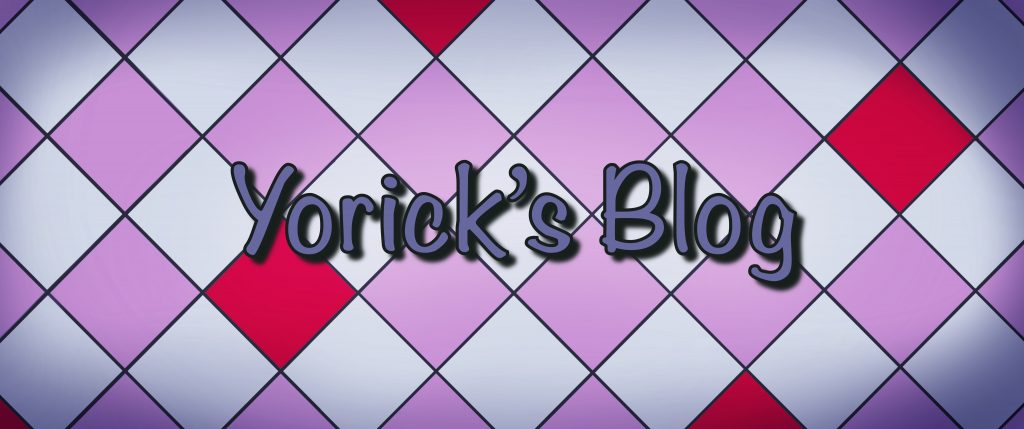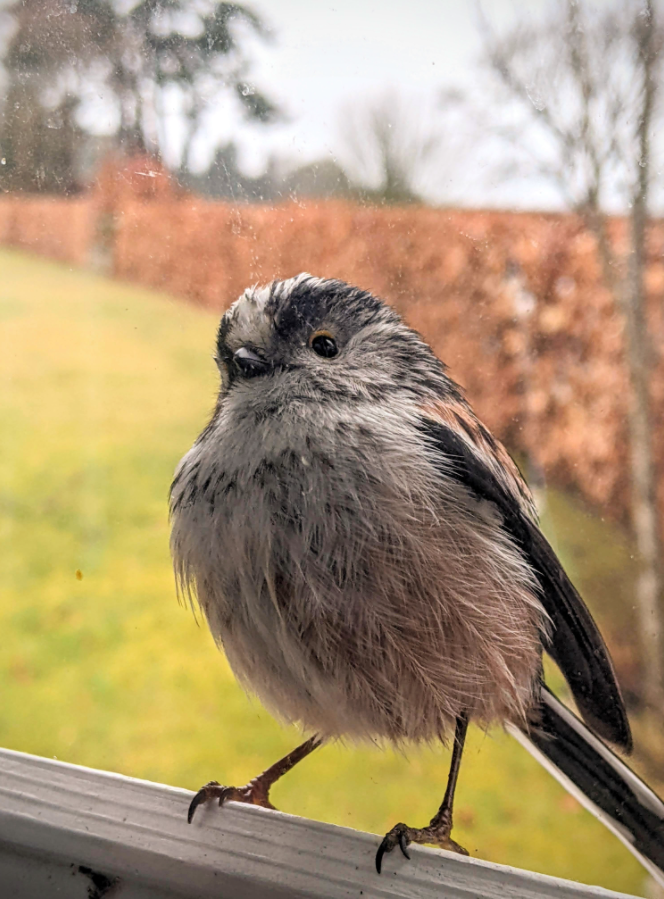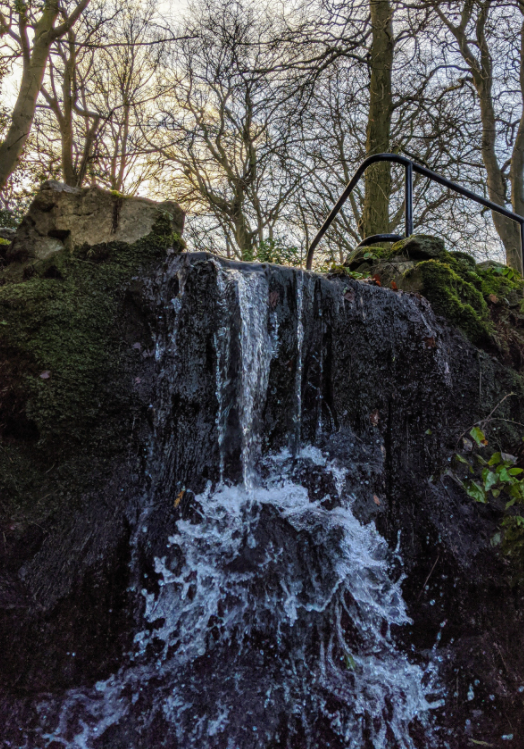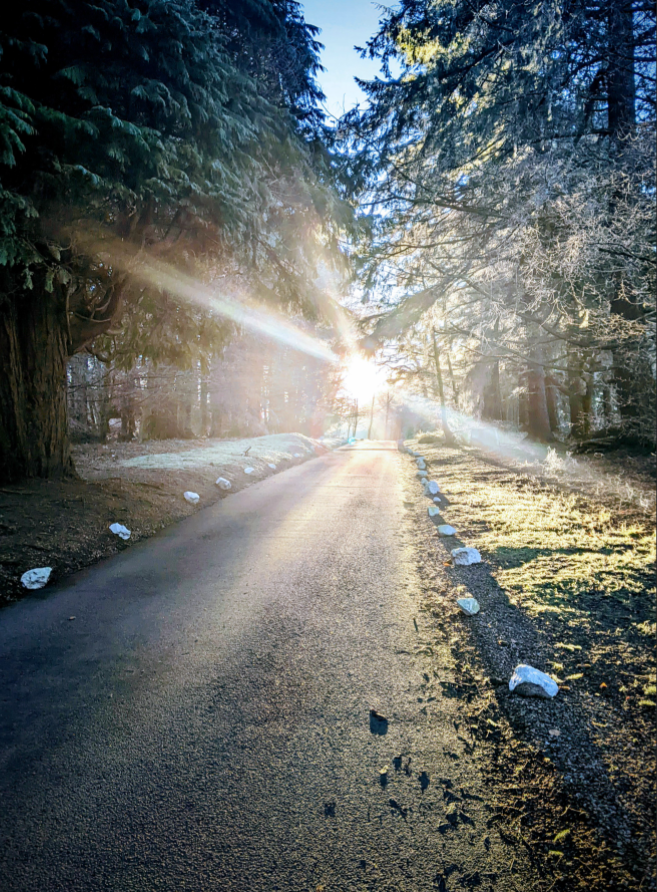
Give Every Man Thine Ear, but Few Thy Voice
At Yorick, the beauty of written and spoken word is key to everything we do. The stories composed by all our talented authors – be that as prose, poetry or plays – build up worlds in our minds, and it’s up to us to bring them to life for our listeners.
In 2019, Rosie studied sound production at university, where they learned many of the skills that have made Yorick possible. One of xer most memorable lessons was on Listening Walks. In this blog post, xe shares xer with us, and how it’s helped xer development as a podcaster and as a writer.
~*~
When I first started delving into sound production, one of the first things my instructor did was take the class on a Listening Walk. No, that doesn’t mean that we went for a stroll with a blindfold on. Instead, he gathered us up, supplied us with microphones, and took us for a stroll around Glasgow’s West end. It reminded me of a school trip: a lost looking line of ducklings staring at everything like we hadn’t seen a city before. Those of us not manning the equipment were told to make notes of all the sounds that we noticed. At first we were overwhelmed by traffic and loud pedestrians, but the longer we focused just on listening the more individual sounds we could pick out of the blur: footsteps on the pavement, birds flapping and chatting, distant bells. After a while, we found that they were almost like different instruments in an orchestra, with each layer of newly noticed sound adding to the overall melody: an audio lasagna.
Our enthusiastic instructor told us that if you want to create artwork with audio then you should start developing a better idea of what spaces really sound like. Taking a Listening Walk is a good exercise for many reasons whether you’re a budding sound engineer, an author, or just want to really tune into your surroundings and get into the habit of noticing fine details. It can be in any setting: walking round a garden, on your daily commute, or as you’re running from the law across the misty moors. The world is your audio oyster.
Even though my course is finished, I still make sure to go on lots of listening walks to keep up my audio production skills, as well as to give me inspiration for writing, and actually just because it’s relaxing and good for mental health.
Let me take you along on my latest listening walk to give you an example;

We start with footsteps on packed earth. Collecting the correct kind of footwear on the right type of ground might not sound important, but if you use high heels on tile when your characters are meant to be in a forest then your listeners will be confused or judge you for your sloppy sound effect choices. The footsteps crunch, reminding me of stepping into shallow snow, but sharper. Behind that, the sound closest to me is the fabric of my clothing rubbing against itself. Cotton. Not velvet or leather.
The longer I listen the more I tune out repetitive sounds, and I can focus on those further afield. I start noticing the difference between the types of snaps and cracks under foot. Sticks have a quick sharp sound, cones burst dryly, and bark crunches like wooden bubble wrap. A short breeze blows through the trees. I can hear leaves flapping and branches creaking against each other. From above and to the right, a bird chatters and it is quickly answered by another on the other side. It has more of a trilling call. It makes me think about how I would recreate this for radio. When making a soundscape it can be more immersive to have certain sounds play from one speaker or headphone to give a sense of direction. Bonus points if you actually get your listener to look round.

Behind me, there is a very brief rustling in the grass. Something stops moving suddenly. It definitely doesn’t want to be seen. I imagine a mouse, scared and shaking at the ground-shaking stomp of my comparatively huge human feet. I move on briskly. Up to the right, a crow calls, more of a cough than a bird song, like an old man lost his voice. If you were recreating this then you could have the sound begin in the left speaker and move to the right, implying that the crow was flying overhead. The crow disturbs a pigeon which takes off in a flurry. Their wings have a pillowy sound to them, which is unlike other birds. Warm and unthreatening.
The path becomes more overgrown, and the grass is catching against my trousers. Up ahead, there is the high bark of a small friendly dog. There is no aggression in it. Suddenly, the moment almost turns into a comedy soundtrack when there is the knocking thud of my boot catching on a root and I nearly fall on my face. Perfect pratfall sound effects!
When I turn into a more tree-enclosed path, the quality of the sound changes. The waves can’t travel as far as they could in the open. They hit objects and are reflected or partially blocked by them. You might not think of sound waves having a physical presence in the world but they do. My footsteps change because I’m now walking on a layer of dry leaves: so dry that they are almost powdered. A buzzing insect flies by my left ear. In a soundscape this could be a signal to the audience that this is summer. There aren’t many flying insects in winter!
In a nearby bush a pigeon is crooning. Maybe it’s the same one. As I pass under a low hanging branch, the new leaves brush against my head. It’s a smooth sounding, drawn out rustle. When I touch a dead branch to push it aside the grain rubs against my palm and makes a distinctly wooden scraping sound. When I let it go the swaying dead wood creaks. Subtle noises like this can subconsciously tell your listeners how your characters are moving through the world without spelling it out in clunky dialogue.

In the distance I can hear lots of small birds singing. A stream, that has nearly dried up in the heat, cuts across the path. The trickling sound of the water is faint. It’s barely moving. The sound reminds me of a tap, not quite turned off, with the water left to trickle into an overflowing cup – a very different sound to that of a rushing river, and one that helps to paint a very specific mental picture in the listener’s mind. The key is in the detail.
Sometimes a sound on your listening walk stands out so clearly that you might want to use it separately from its context. Our next sound is the perfect example of this. There is an uncanny, mournful, vaguely metallic roar directly above me. It’s coming from a low flying plane, and oscillates from ear to ear very quickly. It’s such an interesting noise, and it would be great to use as the roar of a monster or background sound in an alien landscape.
I’m at the end of the walk and as I come out of the woods my footsteps change. First, to the crunch of gravel, then to a hiss of dry, dusty sand and a clatter of small stones, then finally back to packed earth. The listening walk has come full circle.
Our ability to hear is one of our most important senses. In any endeavor where we seek to engage an audience, hooking them on what they can hear is vital to their immersion. Whether you’re writing or podcasting or even combining the two, Listening Walks are certainly one of the best ways I know of to get your creative juices flowing to do just that (I imagine it sounds like tea being poured).
I hope you enjoyed coming on this walk with me, or at the very least I hope it got you thinking more about all the different ways that sounds can help to tell a story. I really recommend that you get out there and give this a go. It doesn’t need to be a walk. You can tune into the sounds around you on public transport, sitting in the garden or while getting a drink in your favorite pub. Wherever you are and whatever you’re doing, open your ears and get creative!
Happy listening!
